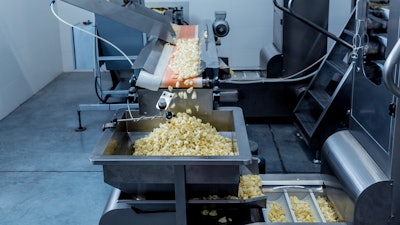
CHICAGO ‒ With injury rates among the more than 90,000 food production workers in Illinois and Ohio significantly higher than other manufacturing workers, the U.S. Department of Labor has stepped up its outreach and enforcement efforts to reduce workplace hazards and better protect workers in these states.
On Oct. 3, the department’s Occupational Safety and Health Administration began the initial outreach phase of Local Emphasis Program focused on more than 1,400 manufacturing facilities in Illinois and Ohio where year-round and seasonal workers manufacture and process confectionery, animal, fruit and vegetable-based products.
Once OSHA completes the three-month outreach effort, the program empowers the agency to schedule and inspect select food industry employers in Illinois and Ohio whose injury rates exceed the state average among all manufacturers. In April, OSHA established a similar program in Wisconsin.
“With the establishment of this Local Emphasis Program, OSHA will stress to employers the importance of taking steps to identify, reduce and eliminate workers’ exposure to machine hazards,” said OSHA Regional Administrator Bill Donovan in Chicago. “Employers have a legal responsibility to provide a safe and healthful workplace whether workers are employed for a day, a season or year-round. This responsibility includes providing workers with training and orientation in the language they understand and making sure proper safety precautions and procedures are followed to prevent serious or fatal injuries.”
Between 2016 and 2020, OSHA investigated multiple fatalities, along with dozens of workers suffering amputations, fractures and crushed hands or fingers. Investigators often determined that the employers commonly failed to control hazardous energy or allowed workers to operate machines without adequate guarding.
In 2019, OSHA found that food production workers in Ohio had a nearly 57 percent higher rate of amputations and 16 percent higher rate of fractures compared to the overall rates for manufacturers in the private sector. In Illinois, these workers experienced a nearly 29 percent higher rate of amputations and 14 precent higher rate of fractures when compared to rates for private sector manufacturing jobs.
In its outreach phase, OSHA will raise safety and health awareness with employers, professional associations, local safety councils, apprenticeship programs, local hospitals and occupational health clinics. Agency representatives will also deliver presentations to industry organizations and stakeholders, and encourage employers to use OSHA’s free consultation services to help them implement machine safety strategies and ensure compliance with OSHA standards.






















